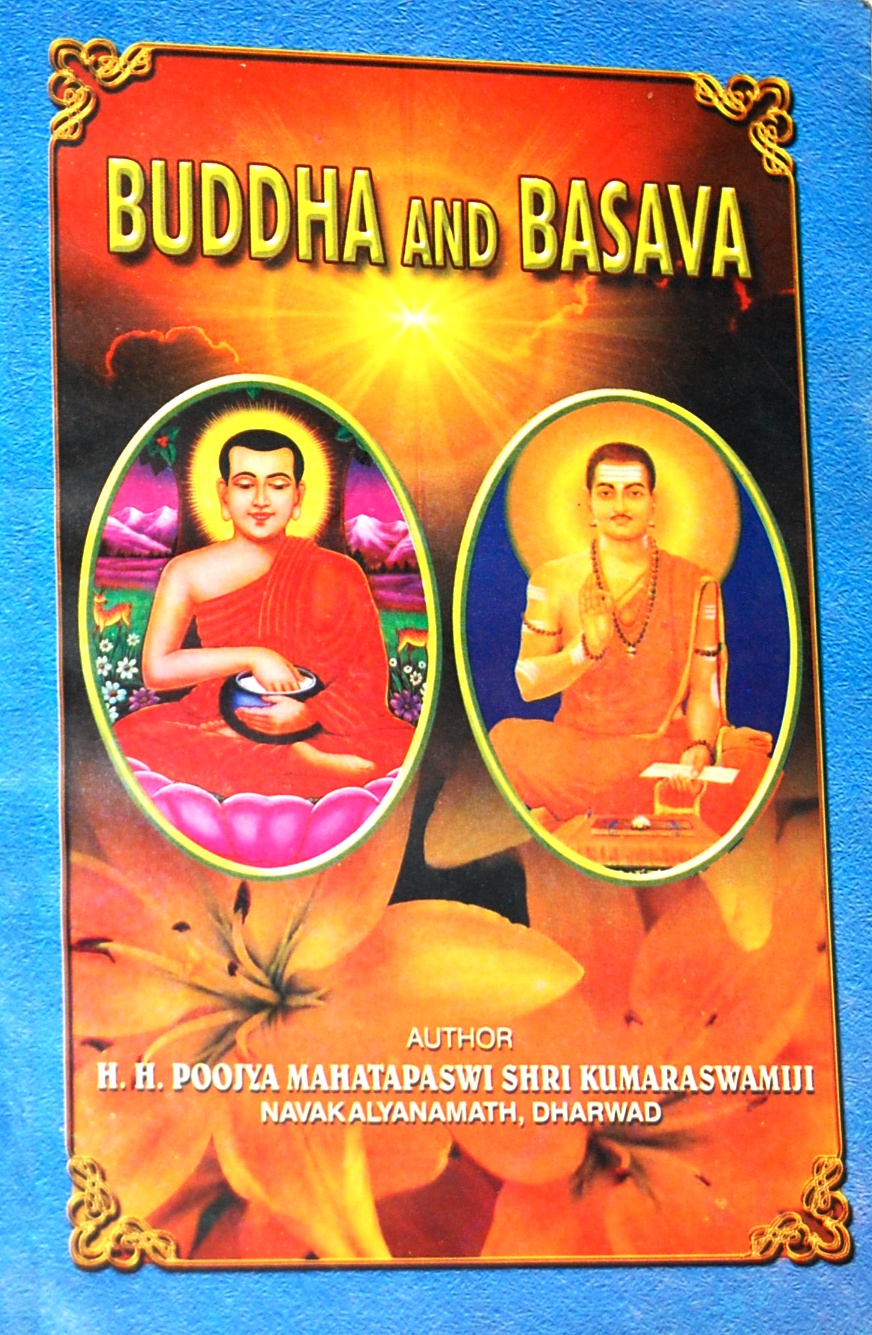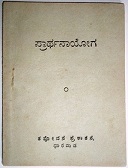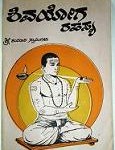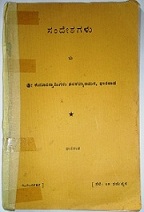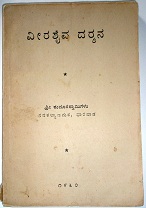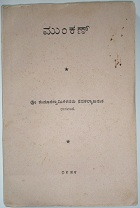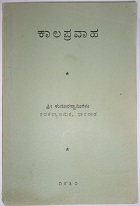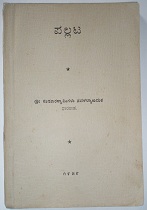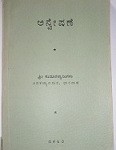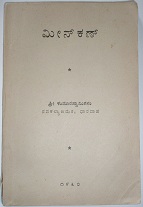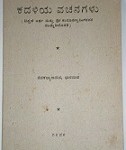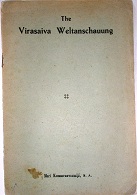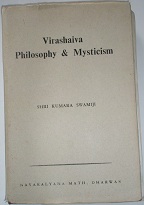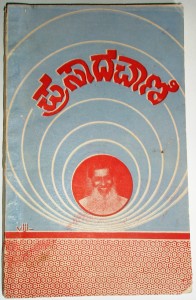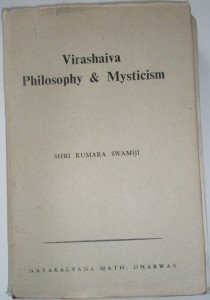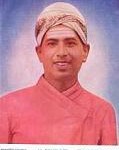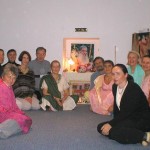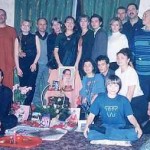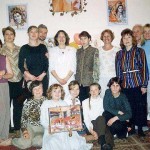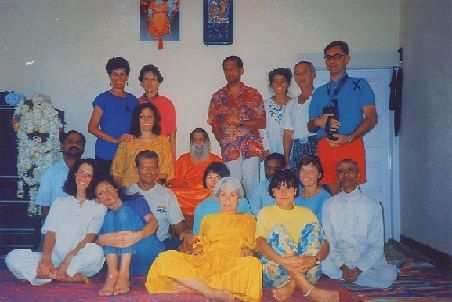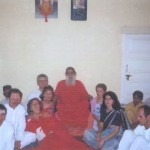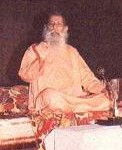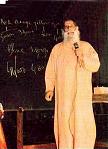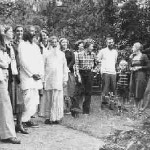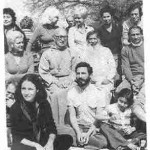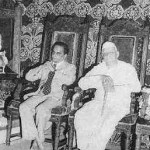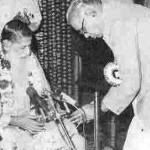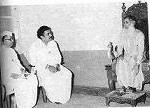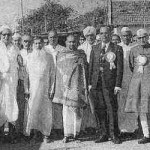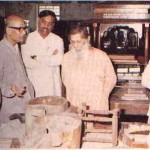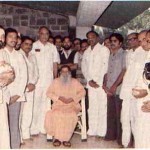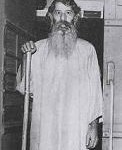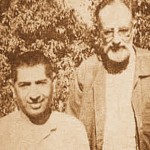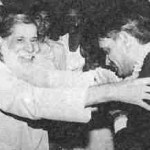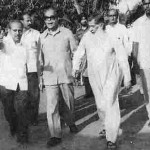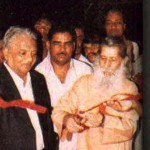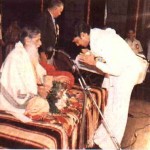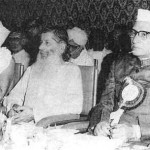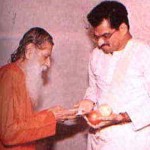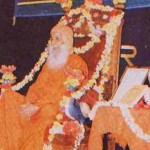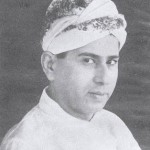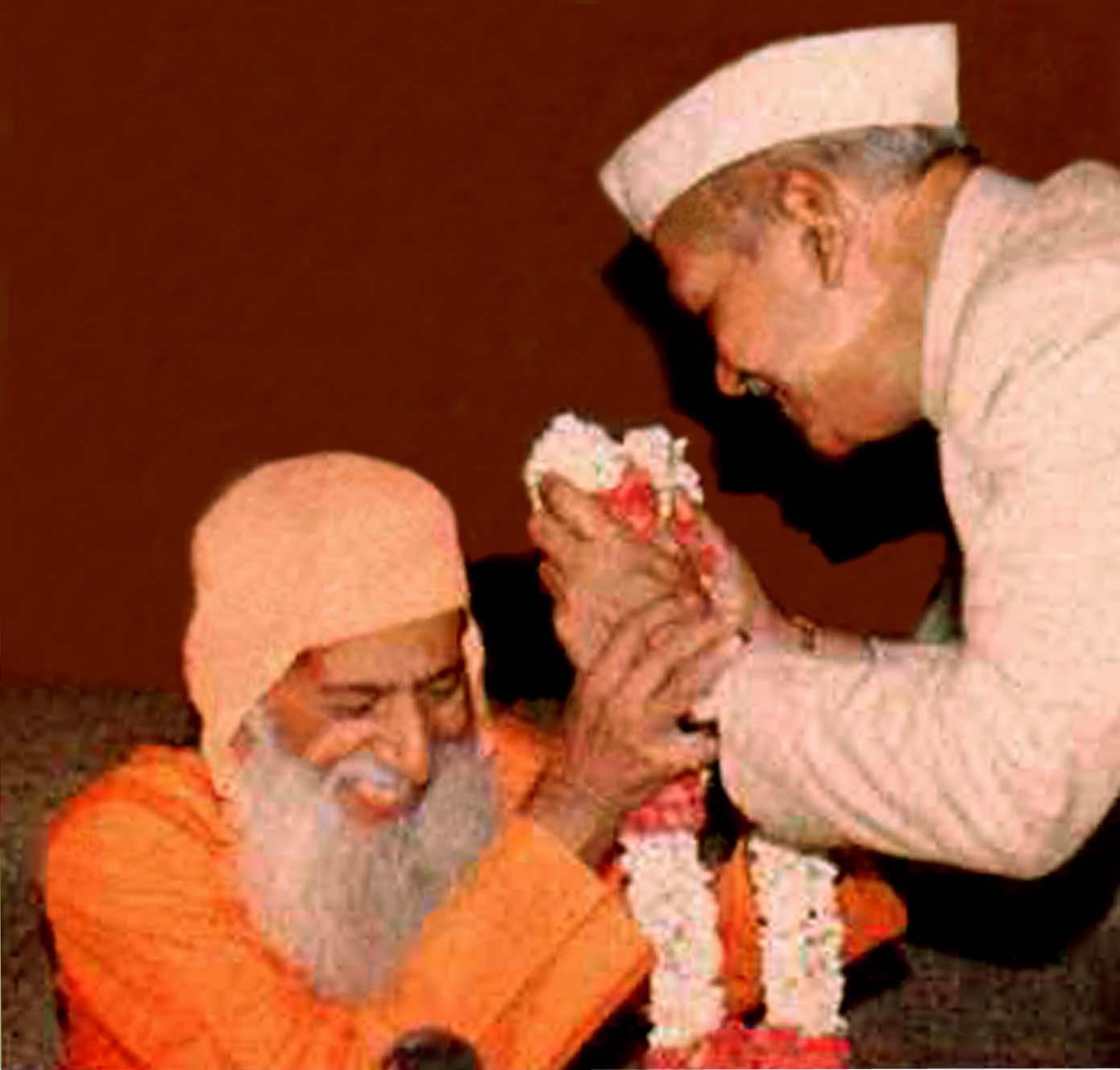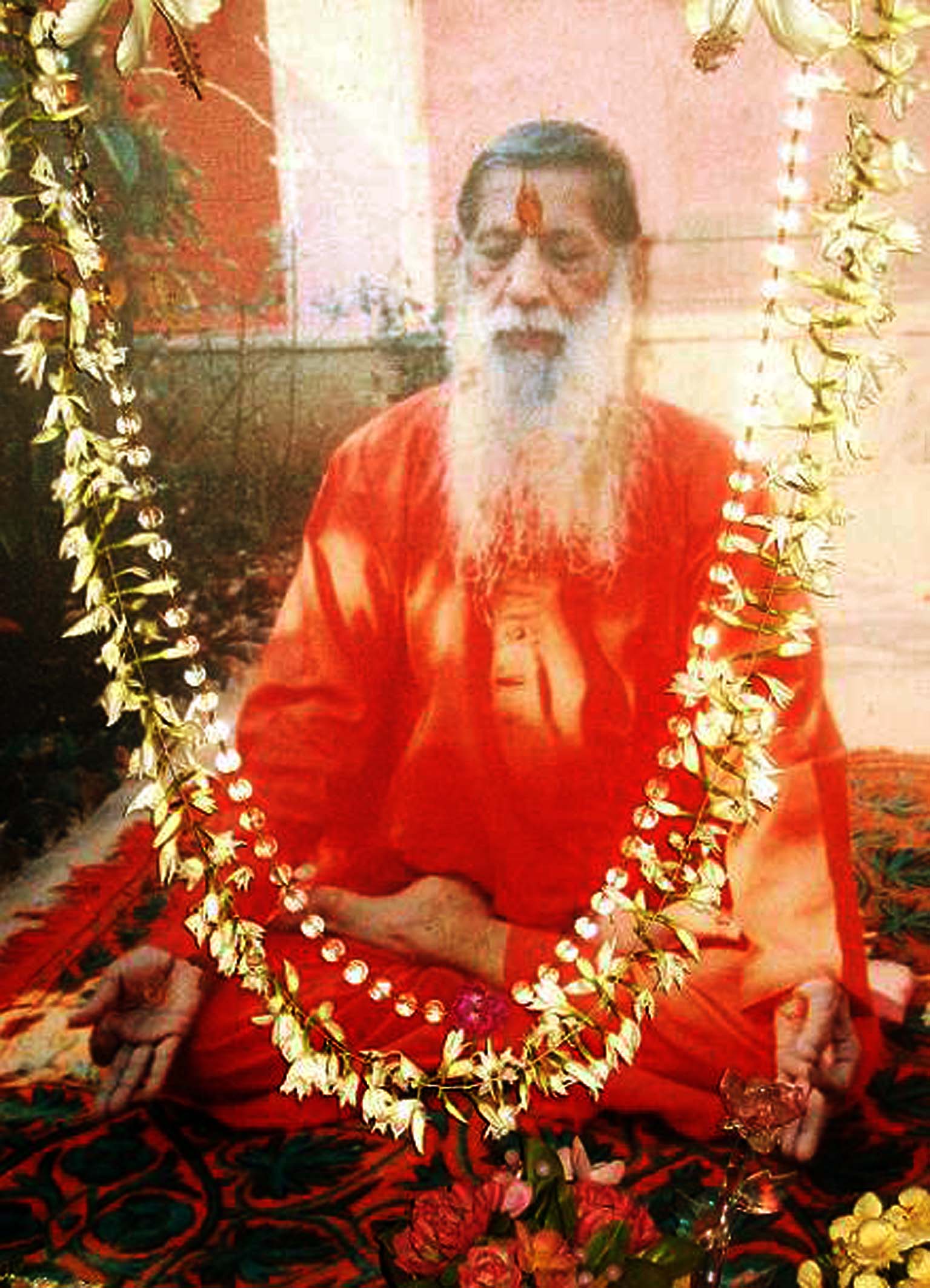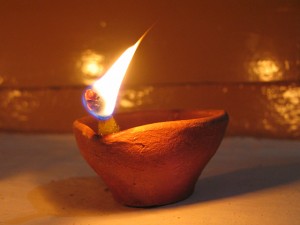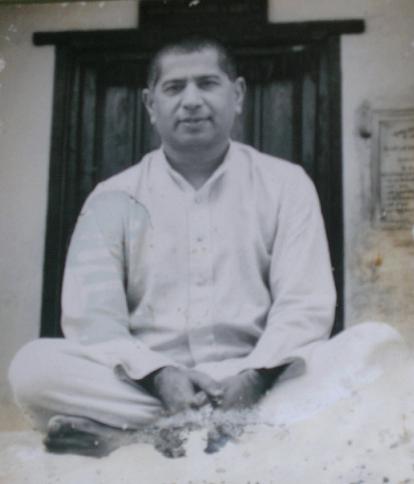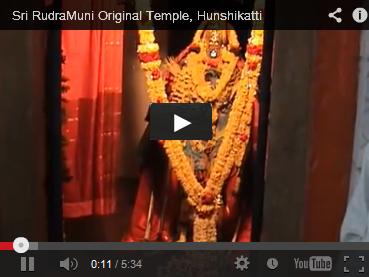Lingayatism is essentially a Religion, the soul of which as we have said is to be sought neither in the Panchachara nor in the Ashtavarana, but in the Linganga-samarasya, the technique of which is Sat-sthala. Panchachara and Ashtavarna are the historical forms in which an inner quality of the religious soul expresses itself from time to time as creed or dogma or worship. And these historical forms must of necessity be imperfect and mutable. No greater mistake can be made than to suppose that any finality can be arrived at in them any more than in science or philosophy; for nothing that can be stated by the formal mind is more than relatively true. In this sense, even Linganga-samarasya and its technique Sat-sthala would be merely the findings of the formal mind since the final religion is formless and creedless.
A religion, in an esoteric sense is a quality of life; the soul of the Lingayat religion so far as its esoteric side is concerned is to be sought in Linganga-Samarasya, the integral association of God and Soul, the technique of which is Sat-sthala. The history or evolution of humanity, as we are able to read it today discloses as its primary phase a gradual development of physical organism. The rise of organic forms out of what we term the inorganic world and a slowly increasing complexity of structure through plant and animal to man characterizes a biological process. And modern science, in so far as it is physical in its scope and biological in its function, may be regarded simply as a somewhat higher degree of this primary recognition of a material environment and necessity. In the second phase we have the emergence of that faculty which we call Mind passing from its earliest manifestation as a mere instinctive knowledge adapted to the more immediate needs of the physical organism, into that higher quality which we apprehend as a rational mind or intellect. As man rises from physical necessity to an intellectual need and desire, which later on finds expression in that deeper inquiry into the nature of life and consciousness, philosophy comes to play its part. From outward and known physical effects we pass to the search for an inner and subjective cause. But this is neither a final stage nor is it the highest quality of our life. As a further stage we have the growth and development of a moral and spiritual sense, born of a gradually evolving intuition and perception of a deeper order of things than that of merely physical and material, and of a certain relationship of the individual to the larger cosmos by which we are environed and of which we are a part. It is this inner perception of quality of life which is broadly classified under the term Religion: the dawn of a moral sense, of ideas of duty, sacrifice, virtue and above all of Intuition.
Thus in a certain sense we may say that Philosophy is higher than Science and Religion is higher than Philosophy, that each of these expresses not merely an additional quality in our life which the other lacks, but also a quality which is deeper in our nature and further in our evolution. The province of science is to garner facts, to observe, to record, to classify and to demonstrate. Science is an exact and experimental knowledge of the relation and proportion of things in all regions; in which facts can be observed and experimented. It endeavours to formulate the laws which govern phenomena of the physical universe, but in doing this it leaves untouched, the great problem of our life and consciousness. Philosophy takes the facts which Science brings to light and states them in larger terms. It states the real fundamental problem of the relation of consciousness itself to this external world of phenomena, the living vital fact of the existence of subject or Knower, and the relation of this subject to the external world as the object which is known or perceived. But Religion with its inner perception of the cosmic order, unites subject and object through the comprehension of common self-existence. In man�s great quest for truth it is always a deep and an indefinable intuition which gives rise to what presently becomes a clearly formulated Science and Philosophy; and deepest of all in our nature lies the intuition of Religion. Religion then is that quality of soul which prompts it to a passionate search for the source of its existence, from which it is separated in consciousness and towards which it is continually moving. The stronger this intuition becomes, the higher becomes its expression in the individual as morality, duty, sacrifice, virtue, love and these not as something enforced by law but as the spontaneous outflow of the soul from its own nature. These are the foundations of all social as well as of all individual well-being. When they decay, when the religious ideal becomes feeble or obscured, the individual, the community or the nation falls into decadence and death.
Lingayatism is essentially a Religion, the soul of which as we have said is to be sought neither in the Panchachara nor in the Ashtavarana, but in the Linganga-samarasya, the technique of which is Sat-sthala. Panchachara and Ashtavarna are the historical forms in which an inner quality of the religious soul expresses itself from time to time as creed or dogma or worship. And these historical forms must of necessity be imperfect and mutable. No greater mistake can be made than to suppose that any finality can be arrived at in them any more than in science or philosophy; for nothing that can be stated by the formal mind is more than relatively true. In this sense, even Linganga-samarasya and its technique Sat-sthala would be merely the findings of the formal mind since the final religion is formless and creedless. It is participation in the One Life which is ‘no respector of persons’. But the clear and pressing demand of the present age is that formulated religion, as presented by its authoritative exponents, should be rational, by which this much at least is meant, that no presentation of it shall come under the reproach of being antagonistic to the known fact of nature and experience.
The demand is something more than the demand for a re-statement or re-formulation of old beliefs. It is a demand for a total abandonment of a method of religion which rests merely on tradition. It is now clearly recognized that any religion worth the name must rest on a much more stable foundation of history; that it must in fact rest on nothing less than the evolution of human thought and not on particular events whether true or otherwise. Individual systems may be founded on particular events, but individual systems are no longer required by enlightenment and reason; nothing short of universal principles which are true for all time and may be experimentally demonstrated at any time, can satisfy the present demand on the part of those who have read the book of nature and of history in a wider and nobler vision. Thus the demand is for actual knowledge of our spiritual life and powers as well as of our physical nature and environment. It is not the demand for a religion which shall pilot us as individuals safely to Heaven, but for one which shall enable us to realize in ourselves here and now the Divine powers, which duly belong to us in our own deeper nature, in its oneness with the whole of the cosmos. It is the demand which shall enable us to realize in an actual consciousness and quality of life that unity of the individual with the Man and of Man with the Universe. Let us in this larger light study the formulated Lingayat Religion.
The ‘Lingadharna-Chandrika Shaivas’ is a treatise written with a view of establishing the efficacy and veracity of wearing Linga, which is the distinctive mark of the Lingayats. Nandikeshvara, the author of Lingadharna-Chandrika begins with an exposition of Linga both in its internal and external forms:
| Jyotir-linganusandhana-rupa-antar-linga-dharana-pratipadanam |
| Ishtalinga-rupa-bahya-dharana-pratipadanam |
The study of Linga as adumbrated by Nandikeshvara demands a dual approach, one the psychological and the other cosmological. We do not mean, by a cosmological approach, an enumeration of the 36 principles, which are the common stock of the Shaivas, the Virashaivas and even of the Shaktas, but we mean an appreciation of the cosmos both in its idea and form, the stand-point of Trio – matter, life and spirit – as revealed by science, philosophy and religion. Matter is form and there is no form which does not express a life; spirit is life and there is no life that is not limited by a form. Hence the manifested universe is Kuruhu, a cosmic form instinct with life and informed by spirit.
This spirit is the self of the cosmos which is self infinite and indefinable. If this infinite and indefinable is, it is necessarily a pure Existent, Sat or Iruhu. It cannot be summed up in any quality or quantity nor is it any aggregate of forms or a formal substratum of forms. If all forms, qualities or quantities were to disappear this would remain. Existence without quantity, without quality, without form is not only conceivable, but it is a one thing we can conceive behind these phenomena. When we say it is without them, we mean that it exceeds them, that it is something into which they pass in such a way as to cease to be what we call form, quality, quantity in the movement. So all things that are conditions and appearance of the movement pass into that from which they have come and there, so far as they exist, become something that can no longer be described by the terms that are appropriate to them in the movement. Therefore we say that the pure Existence or Iruhu is an absolute and in itself unknowable by our thought, although we can go back to it in a supreme identity that transcends the terms of knowledge. Hence the pure Existence is an omni-present Reality which is the truth of all life and existence whether absolute or relative, whether corporeal or incorporeal, whether intelligent or unintelligent. The Reality is One and not a sum or concourse; but this Unity in its nature in indefinable. When we envisage it by the human mind we are compelled to proceed through an infinite series of conceptions and experiences. And yet in the end we are obliged to negate our largest conceptions, our most comprehensive experiences in order to affirm that the Reality exceeds all definitions. We arrive at the conclusion that from it all variations begin, in it all variations consists, and to it all variations return. All affirmations are denied only to lead to a wider affirmation of the same Reality. All antinomies confront each other in order to recognize one truth in their mutual unity. The pure Existent or Sat is the one besides which there is nothing else existent; Iruhu is the be-all and end-all.
Philosophy is an intellectual search after the fundamental truth of things; the search conducted with a consistent and rigorous thinking culminated in the discovery of Sat as the self of things. If philosophy is an intellectual search after the fundamental truth of things, Faith is an attempt to make that truth of things dynamic in the soul of man. To wear Ishtalinga always upon body is a distinctive mark of the Lingayat faith. Linga, as explained and understood by the Sharanas, is the materialization of Sat both in idea and form. Isti means worship and it is only Sat the highest God-head that deserves worship. To carry Ishtalinga always upon the body is to instill it with the presence of God; when the very cells of the body thus get saturated with the idea of the omni-present Reality the human body itself becomes Linga-rupa.
The conception of Linga both in idea and form deserves special notice. We have already seen that Sat is self of things and that Linga, so far as idea is concerned, is none other than the Self. Has this God-head no form? Why, the manifested universe is its Form; then Linga so far as form is concerned, must be after the model of the Universe. Ah, the form is finite and perishable and has only three dimensions. Yes, the idea is infinite and imperishable and therefore it is the fourth dimension. The finite universe (Kuruhu) has therefore the infinite Sat as its source and support. An, in Dravidian language, means source and support, and Attam stands for the finite universe; the compound word is Ataman, the corrupt form of which is Atman in Sanskrit. Thus observes Father Heras, “In the old Dravidian language the word very likely was Ataman, a compound word, Atam-an. Now Attam in ancient Tamil means underworld and An means Lord. Ataman, therefore, means ‘the Lord of the underworld’. This word while passing into Sanskrit lost the second short a and by a natural reaction lengthened the first A thus becoming Atman.” We would, therefore, without any fear of contradiction like to say that Linga is Atman.
The conception of Linga as a symbol of the universe in a spheroidal form is quite an old one. The mind of the ancient man dallied lovingly with the universe which it lived, moved and had its being. The ancient man being, endowed more with an astral vision, saw naturally the hidden side or the fourth dimension of the universe, which enabled him to portray Linga as at once greater than the great and smaller than the small. For the astronomers of today our whole universe is similarly the three dimensional surface of an enormous sphere, a sphere with more than three dimensions. The obvious regression of the Nebulae is the result of an expansion of space in which they are situated, and this expansion of space, in turn, depends upon the lengthening of the radius of the world sphere. And so, the whole universe would expand, as gas expands. This expansion doubles the distance of the Nebulae from us, according to Eddington, every 13 hundred million years, and according to the French astronomer Mineur, every two thousand million years. If astronomy proves the enormous greatness of the universe, physics, on the other hand, with its theory of atom, has reduced the universe to an inconceivable smallness. ‘An atom is a center of force, a phase of electrical phenomena, a center of energy active through its own internal make-up and giving off energy or heat or radiation.” An atom is, as Lord Kelvin says, a vortex-ring or a center of force and not a particle of which we understand as tangible substance. This ultimate particle of matter is now demonstrated to be composed of a positive nucleus of energy surrounded � just as is the sun by the planets � with many electrons or negative corpuscles. The elements differ according to the number and arrangement of these negative electrons around their positive nucleus, proton; and they rotate or move around this central energy of electricity as our planetary system rotates round the Sun. Thus an entire solar system, as Prof. Soddy has pointed out, is to be seen in an atom. In these theories of the universe advanced by astronomy and physics we find a perfect justification of the description of Linga as the greatest of the great and the smallest of the small, Anoraniyan mahato mahiyan.
Is it not gratifying to read in this light, in the light that Linga is Atman, the following passages in the Chhandogya and the Brihadaranyaka Upanishads? ‘This self within the heart is smaller than a grain of rice, smaller than a corn of barley, smaller than a mustard seed, (and let us add, smaller than an atom). This self within the heart is greater than the earth, greater than the sky, greater than heaven, greater than all these worlds” Does not the saying of Basava strike a similar chord? ‘This self under the form of mind being light, indeed is within the heart, small like a grain of rice or barely. He is the ruler of all, the Lord of all. He rules all this what-so-ever exists.” In the Gospels, many parables are devoted to the Kingdom of heaven, and this heaven is not only the paradise of the devout people, it is also the divine Self in man. The kingdom of heaven is at the same time that which is smallest and that which is greatest, and Jesus Christ uses in this connection a similar image. ‘The Kingdom of heaven is like to a grain of mustard seed, which a man taketh and soweth in his field…. Which is indeed the least of all seeds; but when it is grown it is the greatest among herbs and becometh a tree, so that the birds of the air come and lodge in the branches thereof.”
It is also interesting to learn that the conception of Linga as a symbol of the universe in sphereoidal form is not so far distant form the most ancient and apparently most na�ve ones, describing our world in the form of an Egg. For we read in The Secret Doctrine:
“In The Egyptial Ritual Seb, the God of Time is spoken of as having laid an Egg or the Universe…. The Mundane Egg was placed in Khoom, the water of space, or the feminine abstract principle….Ra. The mighty one remains in his Egg, during the struggle between the ‘children of the Rebellion� and Shoo, the Solar Energy and the Dragon of the Darkness.”
“We see the idea of Egg present in the Orphic and the Dionysiac mysteries. Forphyry also shows it to be a representation of the world. In the Orphic Hymns, Eros Phanes evolves from the Divine Egg…. The Egg was sacred to Isis; is almost always represented holding a lotus in one hand and in the other a circle and a cross.”
“Plato in his Timaeus, tells us that the universe is a sphere; and with some Greeks, the first born of the world as Dionysys, the God who sprang from the Mundane Egg.”
“In the Scandinavian cosmogony, the Mundane Egg is again discovered in the fantom Germ of the Universe, which is represented as lying in the Ginnungagap, the cup of Illusion, Maya, the boundless and void Abyss.”
“We read in the laws of Manu: When the Lord Swayambhu (self-existing) decided in his mind to emanate from His substance the various creatures, He produced first the waters in which He laid a germ. This germ became an Egg, shining like gold, and in which the Supreme Being was himself born in the form of Brahma, the father of all beings.”
“The importance given, in religion and symbology, to certain birds, is due to the fact that they lay eggs. Such is the case for Kalahamasa, the swan of Eternity, in India or for Ibis, in Egypt. Even the Christians have to this day the sacred birds for instance the Dove, as the symbol of the holy Ghost.”
The author of The Secret Doctrine, H.P. Blavastsky, the gifted woman comments in the end as follows: ‘The symbol of an egg expresses the fact taught in occultism, that the primordial form of everything manifested from atom to globe, from man to angel, is spheroidal, the sphere being with all nations, the emblem of eternity and infinity.”
The origin of Linga, then, so far as historical study can solve the problem, is to be sought in a symbol of sphere which serves an emblem of eternity and infinity with all nations. Viewed in this impartial, charitable and catholic light, all the attempts of the scholars to explain away the origin of Linga as Lemurian or Mediterranean, as Tibetan or Tamilian, as Asiatic or Atlantic, as Aryan or Dravidian, are merely the offshoots of the discursive intellect, which only confirms the truth of the proverb, ‘as the blind saw the elephant.’
Having thus proved the truth of Ishtalinga from a cosmological view-point, we now proceed to question the veracity of Jyotirlinga from a psychological view-point. The proper study of psychology is man, the conscious being. But in order to understand the real nature of man, it is necessary first of all to inquire into the nature of consciousness, the reality of which is all that we are sure of. Human consciousness is essentially self-consciousness, for even in the simplest process of sense-perception man is aware not merely of a change, but of the consciousness of a change. All human experiences, in brief, consist not of mere events, whether physical or psychical, but of recognitions of such events. What we apprehend therefore is never a bare fact but a synthesis of relations in self-consciousness which involves a subject as well as an object. The Recognitive School of the Kashmir Shaivism has brought this truth into bold relief. As evolution pre-supposes involution, so cognition presupposes re-cognition; man therefore in cognizing an object recognizes himself; that is, in knowing and becoming aware of any object, physical or psychical, he knows or becomes aware of his self. Because of this a priori state of consciousness man who is essentially a conscious being is termed Jnata, the knower, in Indian philosophy; for he knows the functions of the mind, the sense, the muscles and of himself as the self.
– OM SHANTI | OM SHANTI | OM SHANTIHI –
This article ‘Quintessence of Lingayat Religion – I’ is taken from H.H.Mahatapasvi Shri Kumarswamiji’s book, ‘The Virashaiva Philosophy & Mysticism’.











